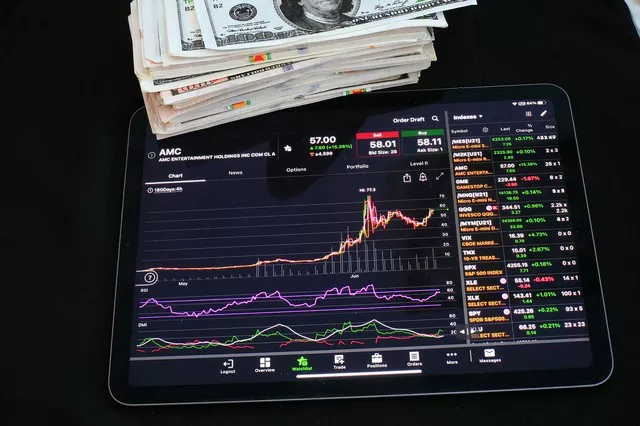Futures trading offers investors the opportunity to engage in speculative endeavors, capitalizing on price movements in various asset classes. One common question that arises for those contemplating entry into the world of futures trading is whether a substantial capital requirement, specifically $25,000, is necessary. In this exploration, we unravel the financial considerations surrounding futures trading, examining the regulatory landscape, account minimums, and the implications for traders aspiring to navigate the dynamic and potentially lucrative realm of futures markets.
Understanding the Basics of Futures Trading
Before delving into the financial requirements, it’s essential to grasp the fundamentals of futures trading. Futures contracts are standardized agreements that obligate the parties involved to buy or sell an underlying asset at a predetermined price on a specified future date. These contracts cover a wide range of assets, including commodities, financial instruments, and currencies. Unlike traditional stock trading, futures trading allows for both long (buying) and short (selling) positions, providing opportunities to profit from both upward and downward price movements.
Regulatory Landscape: The Pattern Day Trader Rule
The Pattern Day Trader (PDT) rule, established by the U.S. Securities and Exchange Commission (SEC), regulates the activities of day traders, including those involved in futures trading. According to the PDT rule, traders must maintain a minimum account equity of $25,000 to engage in day trading activities. Day trading is defined as the buying and selling of the same security, including futures contracts, on the same trading day. While this rule applies to stock trading, it indirectly influences the capital requirements for those trading futures in the same manner.
Futures Account Minimums: Brokerage Requirements
While the PDT rule sets a standard for day trading across various securities, futures trading has its own set of brokerage requirements. Different brokers may have varying account minimums for futures trading, and it’s crucial for traders to be aware of these specific requirements. Some brokers may impose minimum deposit thresholds to open a futures trading account, but these amounts are typically lower than the $25,000 specified by the PDT rule for day trading stocks.
See Also: What ETF tracks wheat futures?
Risk and Leverage: Influencing Capital Requirements
The capital required to trade futures is intricately linked to the concept of leverage. Leverage allows traders to control a larger position size with a smaller amount of capital. While leverage enhances the potential for profits, it also magnifies the risks associated with trading. The use of leverage in futures trading varies by asset class, with commodities often having lower margin requirements compared to financial instruments. Understanding the relationship between leverage, risk, and capital requirements is essential for traders to navigate the futures market responsibly.
Margin Requirements: The Key to Leveraged Trading
Margin requirements represent the minimum amount of capital that traders must maintain in their accounts to cover potential losses. Futures contracts have specific margin requirements set by exchanges, which dictate the initial and maintenance margin levels. Initial margin is the amount required to open a new position, while maintenance margin is the minimum amount necessary to keep a position open. Traders must be mindful of these margin levels, as falling below them could trigger a margin call, requiring additional funds to be deposited to cover potential losses.
Mini and Micro Futures: Lowering the Barrier to Entry
Recognizing the financial challenges faced by aspiring futures traders, exchanges and brokers have introduced mini and micro futures contracts. These contracts represent a fraction of the size of standard futures contracts, allowing traders to engage in futures markets with significantly lower capital requirements. Mini and micro contracts provide a more accessible entry point for individuals with limited capital, enabling them to participate in futures trading with reduced risk and financial commitment.
Educational Resources and Simulation: Learning Without Risk
For individuals looking to enter the world of futures trading without committing significant capital, leveraging educational resources and simulation platforms can be invaluable. Many brokerage firms offer paper trading or simulation accounts, allowing traders to practice their strategies in a risk-free environment using virtual funds. Engaging in simulated trading provides an opportunity to test strategies, understand market dynamics, and gain practical experience without the financial consequences of live trading.
Risk Management: A Cornerstone of Responsible Trading
Regardless of the capital requirements, risk management is a cornerstone of responsible futures trading. Traders must establish clear risk parameters, including stop-loss orders and position sizing, to limit potential losses. Diversification of trading strategies and assets can also help spread risk across different market sectors. Aspiring futures traders should prioritize acquiring a deep understanding of risk management principles before engaging in live trading.
Alternative Investment Vehicles: Exploring Options Beyond Futures
For individuals seeking exposure to the financial markets with less emphasis on leverage and lower capital requirements, alternative investment vehicles may be worth exploring. Exchange-Traded Funds (ETFs) and mutual funds, for example, provide diversified exposure to various asset classes without the complexities of futures trading. While these investment vehicles come with their own considerations, they offer a more straightforward entry point for those with limited capital.
Conclusion
In conclusion, the $25,000 capital requirement associated with the Pattern Day Trader rule primarily pertains to day trading stocks and indirectly influences the broader conversation around futures trading. While futures trading has its own set of account minimums and margin requirements, the financial threshold is not as rigid as the $25,000 specified for day trading stocks. Traders can explore mini and micro futures contracts, leverage educational resources, and practice in simulated environments to gain exposure to futures markets without committing substantial capital. Ultimately, the decision to engage in futures trading should be tailored to individual circumstances, risk tolerance, and financial goals, with a keen focus on responsible and informed decision-making in the dynamic world of financial markets.


